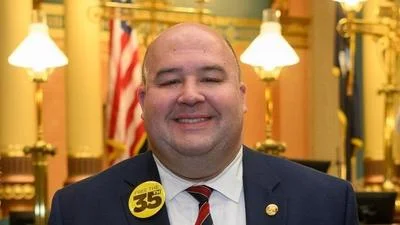Sandy K. Baruah, President and CEO | Detroit Regional Chamber
Sandy K. Baruah, President and CEO | Detroit Regional Chamber
Mindful leadership, which involves being present and aware in the workplace, is gaining traction among business leaders. This approach blends traditional leadership with mindfulness practices to foster a more positive and productive environment.
“Mindful leadership means leading with presence, self-awareness, and empathy,” said Tiffany Schlarman, Interim VP of Communications at Trivium Packaging. “Leaders who practice mindful leadership are completely present, understanding themselves and their surroundings.”
Key aspects of mindful leadership include active listening, emotional regulation, purposeful decision-making, and self-reflection. These practices are intended to help leaders give undivided attention to others, manage their emotions, make thoughtful decisions that balance organizational goals with employee needs, and regularly assess their own leadership style.
Dr. Lamell McMorris, an author and founder of Phase 2 Consulting, emphasized the impact of mindfulness on decision-making. “Mindfulness allows us, as leaders … to pause, gain clarity, and make choices with purpose instead of pressure,” he said. “That shift in mindset not only reduces stress; it sharpens decisions, fuels resilience, and makes it possible to inspire teams in the toughest moments.”
Stress management is another benefit cited by proponents of mindful leadership. Marie Bahl McKenna, CMO of Uptempo, described how mindfulness helps her cope with workplace pressures: “There’s always more to do, so burnout is always a risk. Staying self-aware and taking a breath is the way to stand back and stay cool. This way, I can remain observant, curious, and agile.”
The practice also contributes to a more open company culture. Schlarman noted, “That calmness and focus can help to create stronger relationships and develop resilience, both critical when navigating difficult circumstances.” When leaders model calmness and composure during challenges, employees are likely to follow suit. This can result in higher morale and greater productivity.
For those looking to adopt mindful leadership practices, experts recommend building consistent daily habits such as meditation or reflective routines. McKenna shared her approach: “I start my day with a five-minute morning meditation, relax my breathing between meetings, and reflect nightly on wins … as well as where to improve. I also try to separate what I can control from what I cannot.” She suggests linking mindfulness practices to other routines for consistency.
Schlarman advised leaders to structure their work intentionally: “Conduct meetings with purpose, promote focused dialogue, and work on one task at a time. Modeling intentional behavior encourages others to enhance their own concentration and work quality.” Taking breaks is also important for setting a healthy example for teams.
Vulnerability is another component of mindful leadership. McMorris explained that being open about challenges or mistakes fosters trust within teams: “It reminds everyone that leadership isn’t about perfection. It’s about creating the conditions where people feel empowered to bring their best selves forward, through the good times and the tough ones.”
As mindfulness becomes more common in business settings, these practices are increasingly seen as tools for improving both individual well-being and organizational performance.






 Alerts Sign-up
Alerts Sign-up